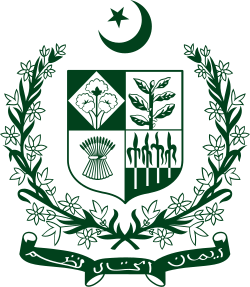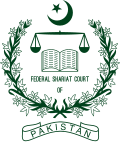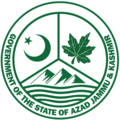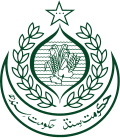| State emblem of Pakistan پاکستان کا قومی نشان | |
|---|---|
 | |
| Armiger | |
| Adopted | 1954 [1] |
| Crest | A mullet and crescent increscent, both vert |
| Shield | Quarterly, first vert a lozenge argent, charged with a cotton flower argent, second argent with tea stalk vert, third argent charged with a garb of wheat vert, fourth party fer fess argent and vert four jute stalks eradicated counterchanged |
| Supporters | Two jasmine branches embowed vert in their natural colors |
| Compartment | Ribbon vert, backed argent upon which is written in argent the word national motto in the Urdu language. |
| Motto | ایمان، اتحاد، نظم "Faith, Unity, Discipline" |
The State Emblem of Pakistan was adopted in 1954 and symbolises the ideological foundation of the country, the basis of its economy, cultural heritage, and guiding principles. [2]




















